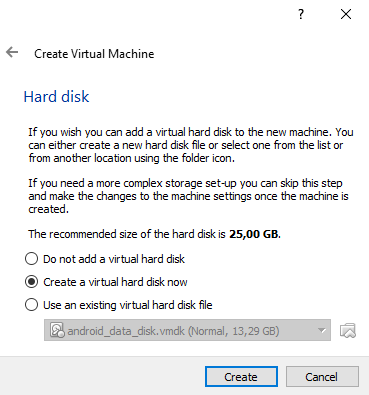

Various tools inside of Kali can be demanding of resources. Again, the higher the amount of RAM, the more applications can be open and at increased performance. “Memory size” is the next section, where we can define how much RAM to use. For the “Version”, we are going to be using the 圆4 desktop image, so we are going to select Debian (64-bit). Example: kali-linux-2023.1-vbox-amd64).įor the “Type”, we set it as Linux. We are keeping it generic in this guide (as Kali is a rolling distribution, and we update it), however for our releases, we use the version number in the name as it is a fixed release ( kali-linux-YYYY.N-vbox-ARCH. This name is also used in any filenames (such as the configuration, hard disk and snapshot - which isn’t changed from this point). The next screen is “Name and operating system” which is where you name the VM. Upon starting up VirtualBox, select “New” (Machine -> New). To speed up installation, and to avoid numerous problems, copy the win98 folder to a folder on the hard drive (such as c:\win98) and then run setup from there.You may need to enable virtualization in your BIOS/UEFI for (e.g. You may need to disable various acceleration features first, or consider emulators like x86Box or PCem. Note: VMWare and VirtualBox can be problematic with Windows 9x.

All others require an appropriate Windows 98 Boot Floppy. Important: Only the OEM Full version is bootable. This will allow systems as old as the 80386 with 8MB of RAM to run Windows 98 (although this will be far from optimal)

Hardware requirements can be bypassed in the setup with the undocumented /nm setup switch. The last version of Microsoft Office capable of running on Windows 98 is Office XP. Other available upgradeable components include DirectX 9.0c, Windows Installer 2.0, GDI+ redistributable, Remote Desktop Connection (XP 5.1), and Text Services Framework. The last version of Internet Explorer that can be installed on 98 SE is 6.0. The Visual C++ 2005 runtime is the last to carry Windows 98 support. Windows 98 Second Edition can be updated with the Microsoft. Windows Media Player 6.2 was also shipped replacing the old classic Windows 3.x/95 "Media Player" that originated with the Windows 3.0 MMC Extensions. DirectX 6.1 was also included with DirectSound improvements. Internet Explorer 4.0 was also upgraded to 5.0 and Internet Connection Sharing made its debut. Windows 98 Second Edition is an update to the original Windows 98 that includes improved modem and sound/audio card support through the Windows Driver Model, improved USB support, Wake on LAN support, FireWire DV camcorder support, and SBP-2 Mass Storage device support.


 0 kommentar(er)
0 kommentar(er)
